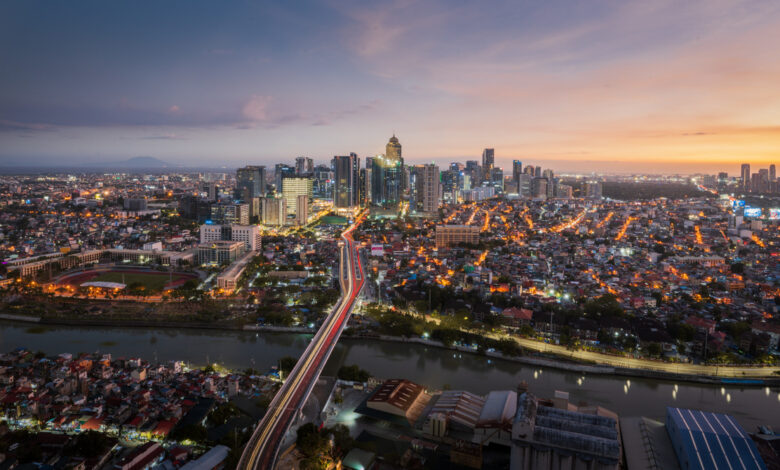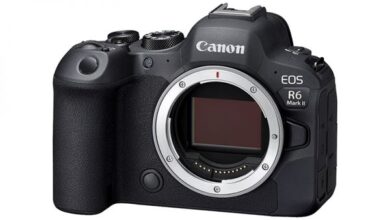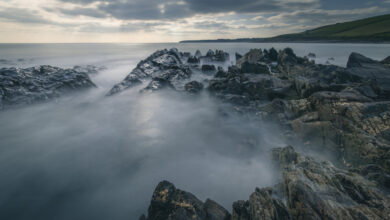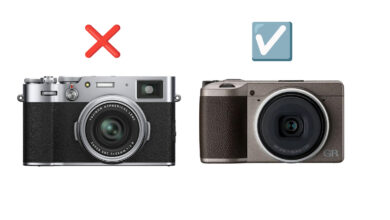4 important factors in choosing a lens for dynamic cityscape photography

Composition when shooting cityscapes depends a lot on your choice of lens. With the right lens to match the image you’ve envisioned, your urban landscape shots can have a lot of visual impact.
When shooting any outdoor scene, the design and composition of the images depends a lot on how well we can illustrate and isolate the patterns in the scene. Our choice of lenses and how we were able to adapt to what the situation required certainly made or broke the shot. There are various considerations in choosing lenses for landscapes as well as urban landscapes that you should definitely keep in mind when shooting or scouting for new vantage points. These factors together will lead you to the composition you envision, which will determine which lenses are really useful for that particular shot.
Distance
The first and easiest factor to observe and consider is simply the distance of the vantage point to the skyline or cityscape that you want to capture. Shooting cityscapes doesn’t always mean capturing the whole thing, but simply finding something that represents the city. Like any other type of photography, the distance to the subject determines your choice of lens along with how much exposure you want. Portrait photographers consider if they’re shooting frontal, full-body, or environmental portraits, and the thought process for capturing cityscapes is pretty much the same.
If your vantage point is near the city, super wide angle lens would probably be the best option. This can be an ultra-wide zoom, which can be more flexible in terms of distance, or a super wide-angle focal length if the angle of view matches the frame you think it is. While I appreciate super wide-angle prime lenses, especially for shooting landscapes with night skies, I generally prefer to use zoom lenses for cityscapes for more flexibility. Also, since they are almost never used for larger apertures, zoom lenses with f/4 or even variable aperture lenses (such as the kit) as long as sharpness is not affected.
Shooting just outside the city or an area of the city with an interesting skyline, the most flexible option is standard zoom lens. While they are relatively limited at the ultra-wide-angle and telephoto ends, these lenses contribute a lot to versatility in shooting situations where moving closer or further away from your subject is not an option. choose. Standard zoom lenses go from relatively wide (regular) at 24mm to relatively narrow (regular) at 70mm, and just like in any other type of photography, if you only have one lens for many purposes target, a standard zoom lens provides that duality. Longer range zoom lenses, often referred to as ambient or walking zoom lenses, are also reliable for the same reason and for a vantage point not too close but also not far from the city landscape. city, these lenses provide good coverage. It is also possible to use primes in the normal range like a 35mm or 50mm lens, but in terms of framing it would be a hit approach.
Sometimes the only available or accessible view of the cityscape is from a neighboring city or a nearby hill. Where is this telephoto lens useful. Obviously, a telephoto lens allows you to capture objects that are much further away. However, they can also help you isolate smaller details from relatively close distances. Usually, for capturing the entire horizon, a regular 70-200mm or 70-300mm zoom lens is more than enough. A versatile option is the 100-400mm lens, especially if you want to isolate specific patterns or details in the cityscape.
The Law of Far and Near
An effective way to make your cityscape images look interesting is to display a unique or even unusual view of the city. This is closely related but not limited to the distance aspect to the cityscape. While looking at the city from a distance or up close can be interesting perspectives, other interesting elements can be height, angle, or through forced perspectives using foreground elements. as different as the reflective surface or frame.
An interesting view is often of the city from a certain height. This can of course be achieved by shooting from elevated vantage points such as skyscrapers, nearby hills, airplanes and of course, via camera drones (if row specified). do not allow). Shooting from a certain height usually requires the widest lens possible so that the entire cityscape can be captured with whatever height limitations the vantage point implies.
The super wide-angle lens is also useful in using foreground elements for reflection, especially when shooting relatively close to the city. However, a longer lens can also be useful if the foreground and/or cityscape are relatively far away.
Negative space
Your use of space in your photos contributes to the way you portray the cityscape in your photos. Getting closer through the zoom lens and filling the frame helps viewers appreciate the textures, patterns, and details that can be found in the city. By taking up all the space in the frame with urban details, you also create the impression that the city is busy and possibly crowded.
On the other hand, if you use a wider lens to allow more negative space in the frame, it doesn’t necessarily mean you’re making the city look small but allowing your viewer to see the scene. the city in relation to its surroundings. This could include mountains or water in the background, or simply some clouds or even stars in the sky. Classic cityscape shots often show the entire city with a pleasant sky that complements it. The key aspect is finding the right proportions between details and negative space to create a balance of visual weight that will make you happy to look at.
Top lines
A huge appealing factor to consider when choosing which lens to use is the presence of foreground or background elements that create paths (or curves) towards the center of the city. These can be roads that are busier than nearby streets, bridges or other illuminated roads moving into the frame, as well as clouds in the sky leading in the same direction. Using and including such patterns in your frame can be done with any lens depending on your distance, but the general rule will always be to shoot a little wider to make room for the money. landscape or sky.
Landscape photography almost never disappoints in terms of its ability to create animation. The bright lights of the city can create an attractive contrast even on days of inclement weather. The most important factor is how you layout your images to create an immersive yet unique experience for your viewers.




